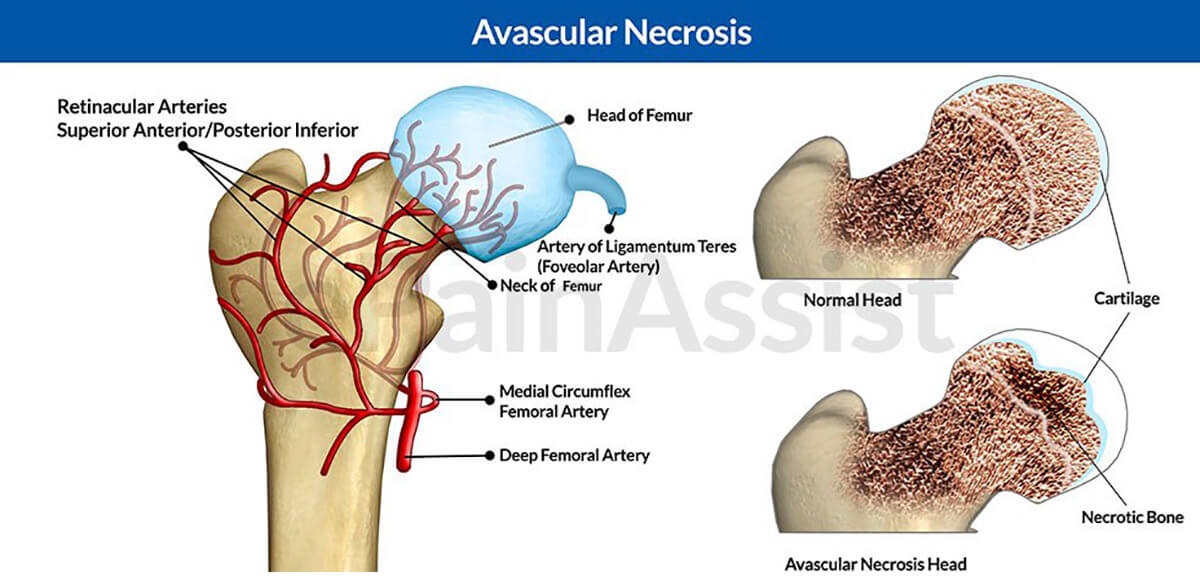-
Mon - Sat
08:00am - 08:00pm


Avascular necrosis also called as osteonecrosis or ischemic bone necrosis is a condition that occurs when there is loss of blood supply to the bone.
The process eventually causes the bone to collapse
Hip joint is most commonly affected
Joint dislocation – A joint dislocation can interrupt the blood flow to a section of bone.
Long term use of high doses of steroids
Excessive alcohol intake
Certain medical condition like sickles cell anemia and gaucher’s diseases.
Many Patients have no symptoms in the early stage of AVN
As the condition progress, the affected joint starts paining mainly on weight bearing
Pain may radiate to the groin, thigh, and buttocks
Rom of the joint gradually reduces
AVN worsens with time. The bone eventually collapse and losses its smooth shape leading to arthritis.
Limit Alcohol – Heavy drinking is one of the top risk factors for developing avascular necrosis
Keep Cholesterol Level low –Tiny bits of fats is one of the most common substance blocking blood supplies to bones.
Monitor steroid use – Steroid related bone damage appears to worsen with repeat use of high doses steroids.
Smoking – Smoking increases the risk of AVN.
Clinical Exam – Tenderness in scrapes triangle (groin area) limited range of movement, difficulty in weight bearing.
X-RAY – Can only be helpful in later stage once the bony changes has occurred.
MRI – MRI can show early changes in bone.
Bone Scan – Bone scan is also an investigation of choices for AVN.
NSAID’S – Might help to relive pain in early stages.
Osteoporosis Drugs – Medication such as alendronate might slow the progression of AVN
Rest – Reducing weight and stress on your affected joint can slow the damage.
Physiotherapy – Can help to maintain the range of motion.
Core decompression – The surgeon drill a hole through the core (inner layer). Besides reducing pain it also stimulates the production of healthy bone tissue and new blood vessels.
Bone Transplant (Graft) – This procedure can help to strengthen the area of bone affected by avascular necrosis is usually refer for fibula.
Regenerative Medicines – Bone marrow is newer procedure that might be appropriate for early stage.
Joint Replacement – If the bone has collapsed and other conservative treatment aren’t helping then one needs to replace the damaged parts of the joint with plastic or metal parts.